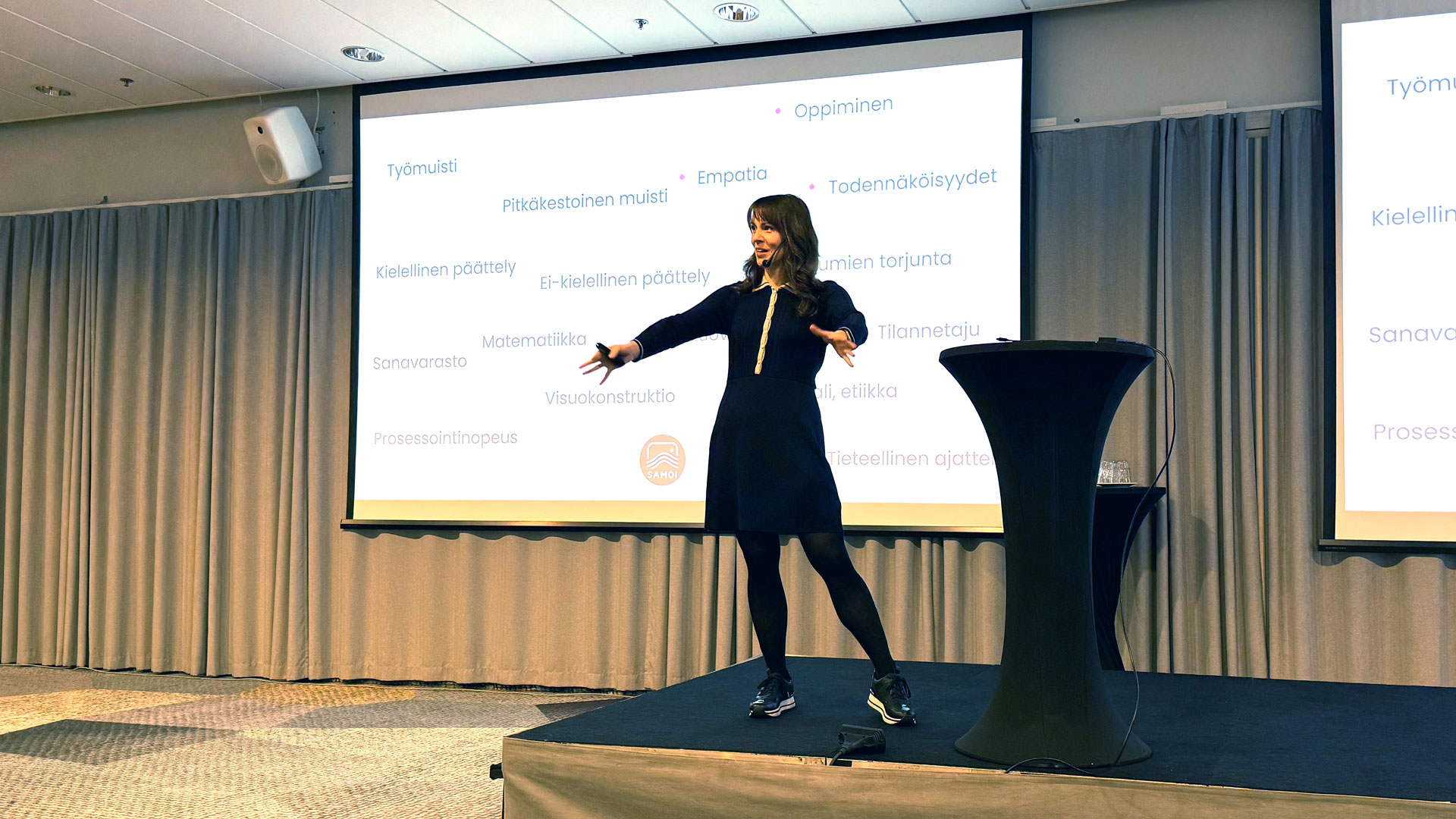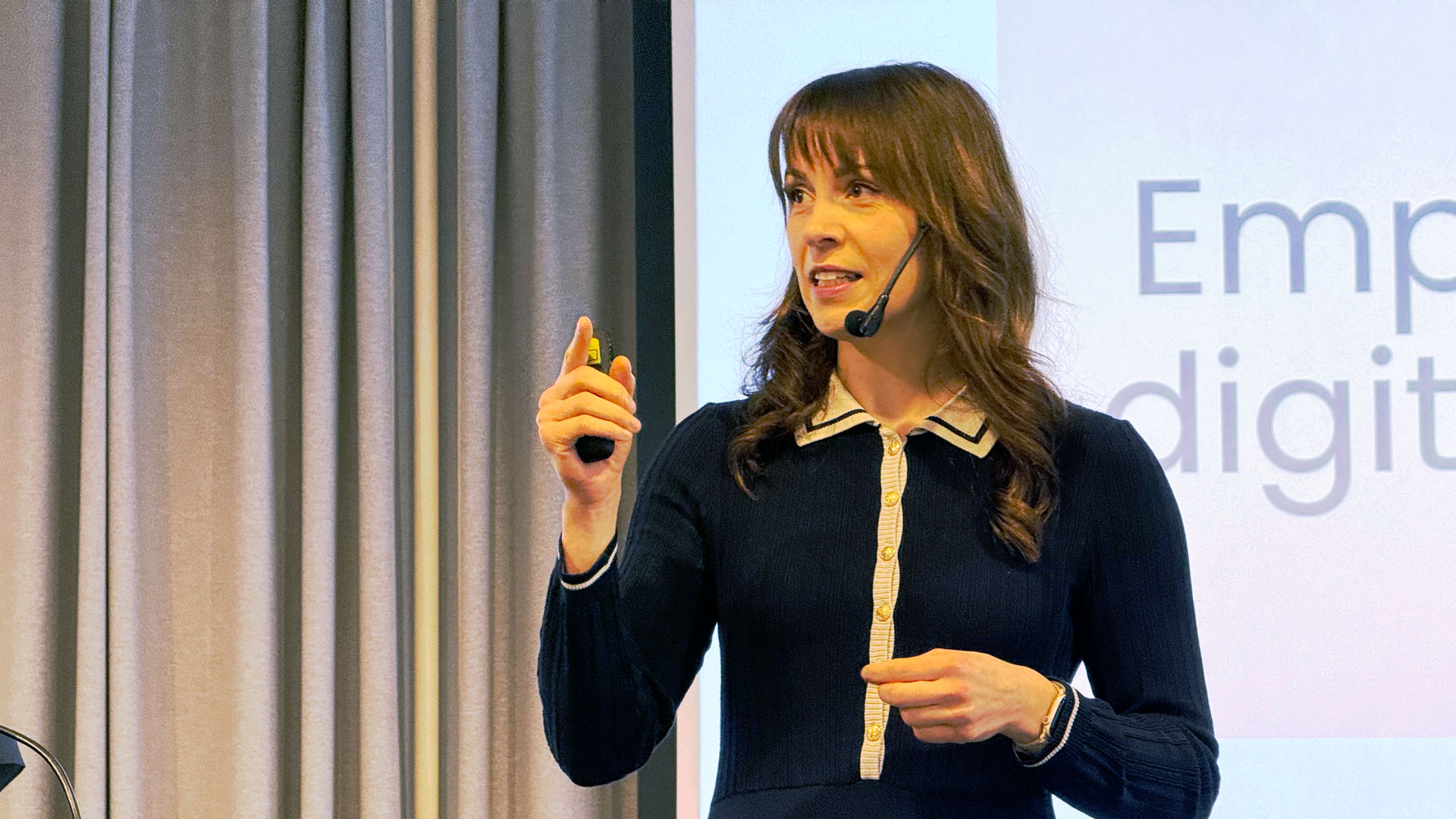Construction focuses on the most tangible and physical aspects of our environment. Yet, it is often described as a people-oriented business. If people are essential, psychology should be as important a research area as building information modeling or AI. Still, we mainly discuss technology, design, regulations, or financials at construction meetups.
A delightful exception to the rule was Trimble BIMbuild 2025 last Thursday in Helsinki. It was filled with BIM discussions and tech demonstrations, but the first keynote speaker truly stood out.
Katri Saarikivi is a Doctor of Psychology, a cognitive neuroscientist at the University of Helsinki, and an award-winning speaker. Her key theme is empathy and its increasing importance in business today.
Game over?
Saarikivi stated that humans’ IQ game is over. The latest developments in AI have made that clear, even though machines have already beaten us physically and in data processing decades ago.
While Saarikivi delivered her keynote, news broke that GPT-4.5 and Llama-3.1-405 B had passed the Turing test. Interrogators believed they were conversing with humans 73% of the time when interacting with the AI.
Critics argue that the test measures intelligence rather than “human likeness.” However, machines can mimic our behavior and win hearts.
Saarikivi referred to a study in which people chatting with an “AI doctor” felt it was more empathic than a human physician. An Aalto University researcher reported that AI-generated construction quality assessments were considered better than those of humans.
Empathy – our secret weapon
Robots will not eliminate human jobs; instead, the nature of work will change. Humans will increasingly focus on work that machines cannot do well, which requires distinctly human capabilities.
Saarikivi argues that empathy is emerging as the most essential work skill in the robotic age. It encompasses all the abilities needed to 1) understand others, 2) share thoughts and feelings, and 3) be motivated by helping others.
Empathy means understanding and sharing someone else’s feelings while keeping your emotions separate. It’s imagining yourself in their situation to grasp what they’re going through but still knowing that their feelings are theirs and not yours.

Busting empathy myths
In environments prioritizing objectivity, empathetic individuals may be considered overly emotional or lack the firmness required for tough decision-making. Saarikivi said that’s a misconception of empathy.
Another myth is that empathy is an inborn characteristic. As savvy salespeople have known for ages, this skill can be cultivated and enhanced over time through intentional practice and experience.
Saarikivi said she was surprised at how effective a sales tactic called mirroring was. It involves subtly imitating a customer’s gestures, posture, speech patterns, or attitudes during interactions.
Digital interaction hampers empathy
COVID opened our eyes to the potential of remote interaction and work. Whether team members were in Helsinki, Berlin, or San Francisco, everyone shared the same interaction experience. Now, many still prefer remote meetings and chat interactions to in-person meetings.
Why don’t video meetings feel the same as sitting face-to-face? Saarikivi mentioned that the main thing lacking is body language, like micro-movements that a webcam can’t capture. In addition, there’s always a tiny delay in communication, which messes up with our empathetic brain functions. Empathy is based on “being in sync,” and technology makes achieving that harder.
An audience question touched on another challenge of all-digital communication: the social skills of young people. When communicating with emojis and even preferring not to call, empathy becomes a vital skill that companies need to teach their recruits.
Making collaboration efficient and effective
Saarikivi encourages you to ask, “Where do I need people in my work?” In the AEC industry, the response is, “In every step of the process.” And therefore, empathy should be given in our daily interactions.
Empathy is a shortcut to effective communication. When you perceive the other person as “like me” and collaborate “with me,” teamwork becomes more enjoyable. This doesn’t imply that everyone must share the same mindset, but when you regard others as equals, you can discover mutually acceptable solutions more quickly.
Not all human interactions require in-person meetings. However, it is essential to plan communications thoughtfully and select the appropriate medium for each situation. Technology goes beyond video conferences or chats, so consider exploring other interaction methods in your next project.
Should we teach empathy?
Many AEC companies today are investing in AI training, and rightly so. However, as we teach machines to think, we must also remember to teach ourselves to feel.
Saarikivi suggested in an earlier talk that we should become “explorers of the world” to cultivate empathy. Even reading fiction, for example, has been scientifically proven to increase empathy. Another approach involves finding ways to get “on the same wavelength” with others through shared experiences.
Is it time to consider empathy training mission-critical, just as we do with technology?
View the original article and our Inspiration here


Leave a Reply